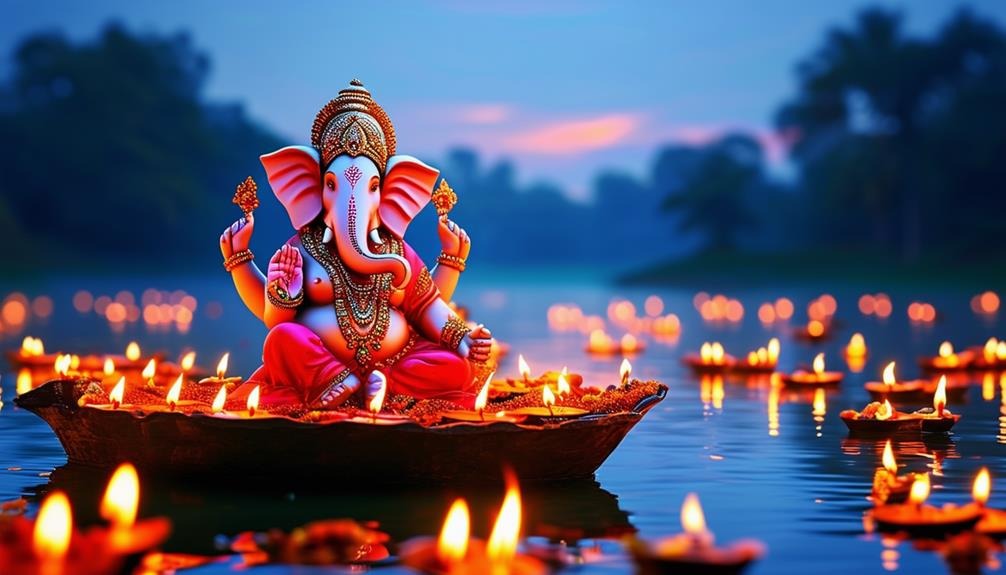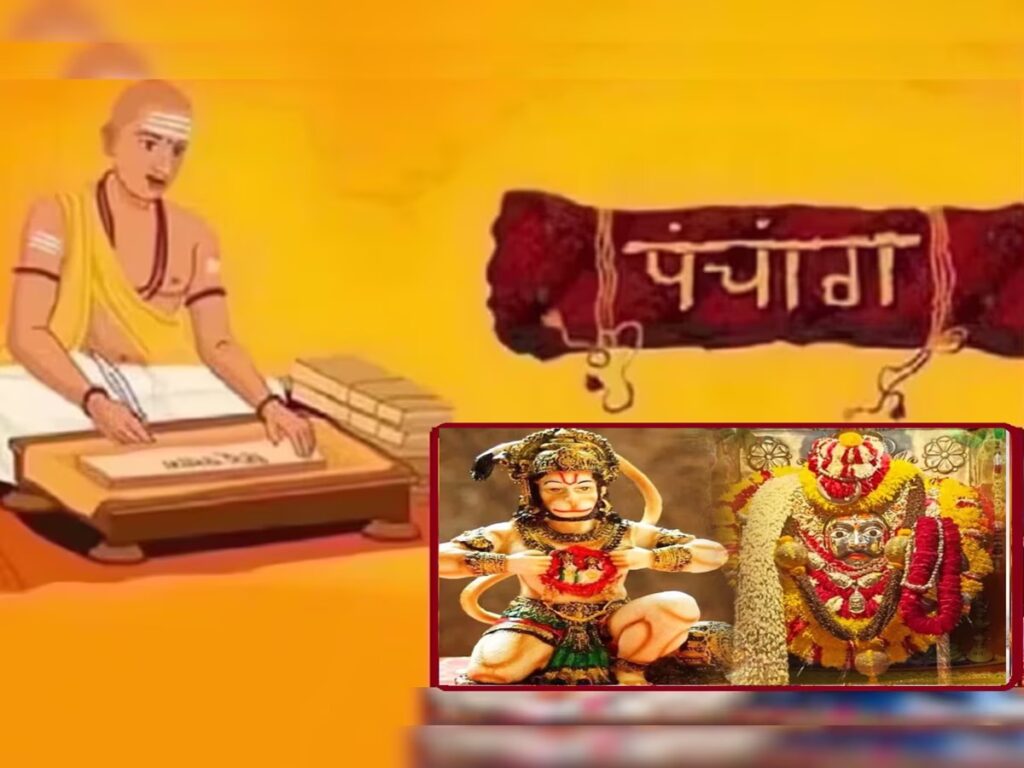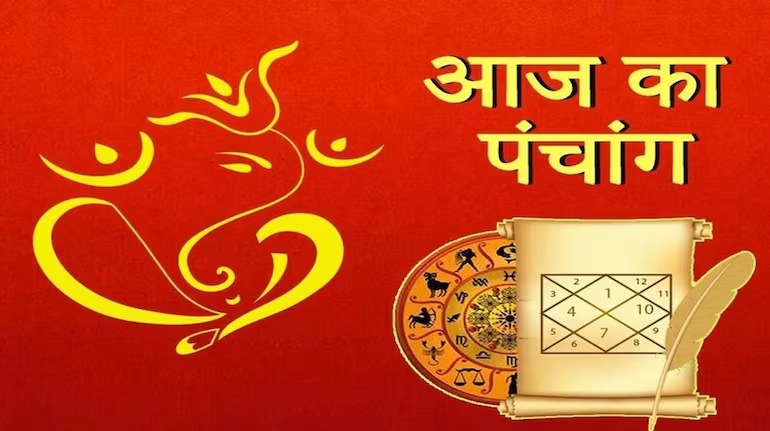
The Hindu Panchang, also known as the Hindu calendar, is an essential tool in Hindu culture, guiding daily life, religious observances, festivals, and auspicious times for rituals. The word “Panchang” literally means “five limbs,” and these five elements provide a comprehensive system to track time according to the cycles of the sun, moon, and planets. The Panchang serves as a detailed guide for understanding the cosmic rhythm, timing of events, and the alignment of celestial bodies with earthly life.
This article explores the different components of the Hindu Panchang, their significance, and how it is used in religious and cultural practices.
1. The Five Key Elements of the Panchang
The term “Panchang” is derived from the five key elements that make up the calendar system:
Tithi (Lunar Day)
The Tithi is the lunar day in the Hindu calendar. The lunar calendar divides the cycle of the moon into 30 segments, each representing a Tithi. Each Tithi corresponds to the phases of the moon, from new moon (Amavasya) to full moon (Purnima), and every Tithi holds specific astrological significance.
Shukla Paksha (Waxing Phase): The period from the new moon to the full moon. It is considered auspicious, particularly for starting new ventures.
Krishna Paksha (Waning Phase): The period from the full moon to the new moon. Certain rituals and fasting practices are observed during this phase, often for spiritual cleansing.
Each Tithi is associated with specific deities, rituals, and events, and it’s considered an ideal time for various activities, including marriage, religious worship, or starting a business.
Vara (Weekday)
Vara refers to the day of the week. In the Hindu system, each day is associated with a specific deity and is considered auspicious for particular activities. For example:
Sunday (Ravivar): Dedicated to Lord Surya (the Sun God).
Monday (Somvar): Dedicated to Lord Shiva.
Tuesday (Mangalvar): Dedicated to Lord Hanuman and Mars.
Wednesday (Budhvar): Dedicated to Lord Vishnu and the planet Mercury.
Thursday (Guruvar): Dedicated to Lord Brihaspati (Jupiter) and Lord Vishnu.
Friday (Shukravar): Dedicated to Goddess Lakshmi and Venus.
Saturday (Shanivar): Dedicated to Lord Shani (Saturn).
Each Vara is believed to carry its own energy, influencing the results of actions performed on that day. For instance, Thursday is considered an auspicious day for spiritual practices and wisdom.
Nakshatra (Lunar Constellation)
Nakshatras are the 27 lunar constellations that the moon passes through during its orbit around the Earth. Each Nakshatra holds unique astrological significance, influencing the nature of the day and the person born under it. For example:
Ashwini is associated with healing and energy.
Rohini is connected with beauty and prosperity.
Mrigashira governs travel and knowledge.
The positioning of the moon in a particular Nakshatra during an event or ceremony determines the auspiciousness of the time, and many Hindu traditions involve choosing a favorable Nakshatra for performing important rituals or making life decisions like marriage or starting a new business.

Yoga
The Yoga is a combination of the positions of the Sun and Moon, divided into 27 parts. The Yoga influences a person’s mental and physical state and the overall energy of the day. Each Yoga has its own qualities, and certain Yogas are considered more auspicious for specific activities.
Some important Yogas include:
Vyatipata Yoga: Considered inauspicious for starting new ventures.
Siddhi Yoga: Favored for successful outcomes and accomplishments.
Amrita Yoga: Signifies longevity and well-being.
Yogas play a significant role in choosing the best times (Muhurta) for important events like marriages, housewarming, and starting new businesses.
Karana (Half of a Tithi)
Karana refers to the half-day period within a Tithi. There are 11 different Karanas, and each one has a specific impact on activities. For example:
Bava: Good for investments, gathering wealth.
Kaulava: Good for starting important tasks or work.
Taitila: Suitable for any general work or travel.
The Karana helps determine the appropriate times for auspicious activities, including ceremonies and rituals.
2. The Lunar and Solar Calendars in the Panchang
The Hindu Panchang incorporates both lunar and solar elements to track time. The lunar year is about 354 days, shorter than the solar year, which is about 365 days. To adjust this discrepancy, an additional month, called the Adhik Maas or leap month, is inserted every 2-3 years. This ensures that the festivals and rituals are aligned with the seasons and the solar calendar.
While the lunar calendar determines Tithis, Nakshatras, and the phases of the moon, the solar calendar tracks the movement of the Sun through the 12 zodiac signs, marking the solar months and the changing of the seasons. Together, the two calendars help balance the celestial rhythm and ensure that festivals are celebrated in harmony with nature.
3. Significance of Panchang in Daily Life and Rituals
The Hindu Panchang is not just a calendar but an integral part of daily life and religious practice. Here’s how it plays a role:
Auspicious Time Calculation (Muhurta)
One of the primary uses of the Panchang is calculating Muhurta, the auspicious time for performing any significant activity. It is believed that starting important work during the correct Muhurta ensures success and positive outcomes. The Panchang helps identify these times based on the positioning of the planets, Tithis, Nakshatras, and other astrological factors.
Festivals and Religious Observances
Many Hindu festivals are celebrated according to the lunar calendar, which is detailed in the Panchang. The Tithi, Nakshatra, and specific planetary alignments play a crucial role in determining the exact dates for festivals like Diwali, Holi, Navaratri, and Makar Sankranti. Additionally, daily rituals, such as prayers and pujas, are timed based on the Panchang to ensure they align with favorable astrological conditions.
Astrology and Personal Life
The Panchang is a tool for astrologers who use it to calculate horoscopes, assess planetary positions, and provide guidance on personal matters like marriage, childbirth, and career decisions. The positioning of planets at the time of birth is crucial in Vedic astrology, and the Panchang provides the necessary data for making these calculations.
Cultural and Agricultural Significance
Many traditional activities, such as planting crops or performing rituals related to harvests, are planned according to the Panchang. For instance, Gudi Padwa (New Year for Maharashtrians) and Baisakhi (celebrating the harvest season in Punjab) are celebrated in alignment with the solar and lunar positions.

The Timeless Wisdom of the Panchang
The Hindu Panchang is more than just a calendar. It is a tool that connects humanity to the cosmic forces governing the universe, offering insight into the best times to act, the significance of celestial events, and the auspiciousness of specific days. By observing the Panchang, Hindus align their personal lives with divine cosmic rhythms, ensuring success, prosperity, and spiritual growth. Whether for daily activities or major life events, the Panchang remains a guiding force in the religious, cultural, and spiritual fabric of Hindu society.
By respecting and understanding its components, we connect to a deeper understanding of time, destiny, and the universe’s grand design. The Panchang is a celebration of the intricate connection between the macrocosm (universe) and the microcosm (individual), reflecting a timeless harmony between them.















